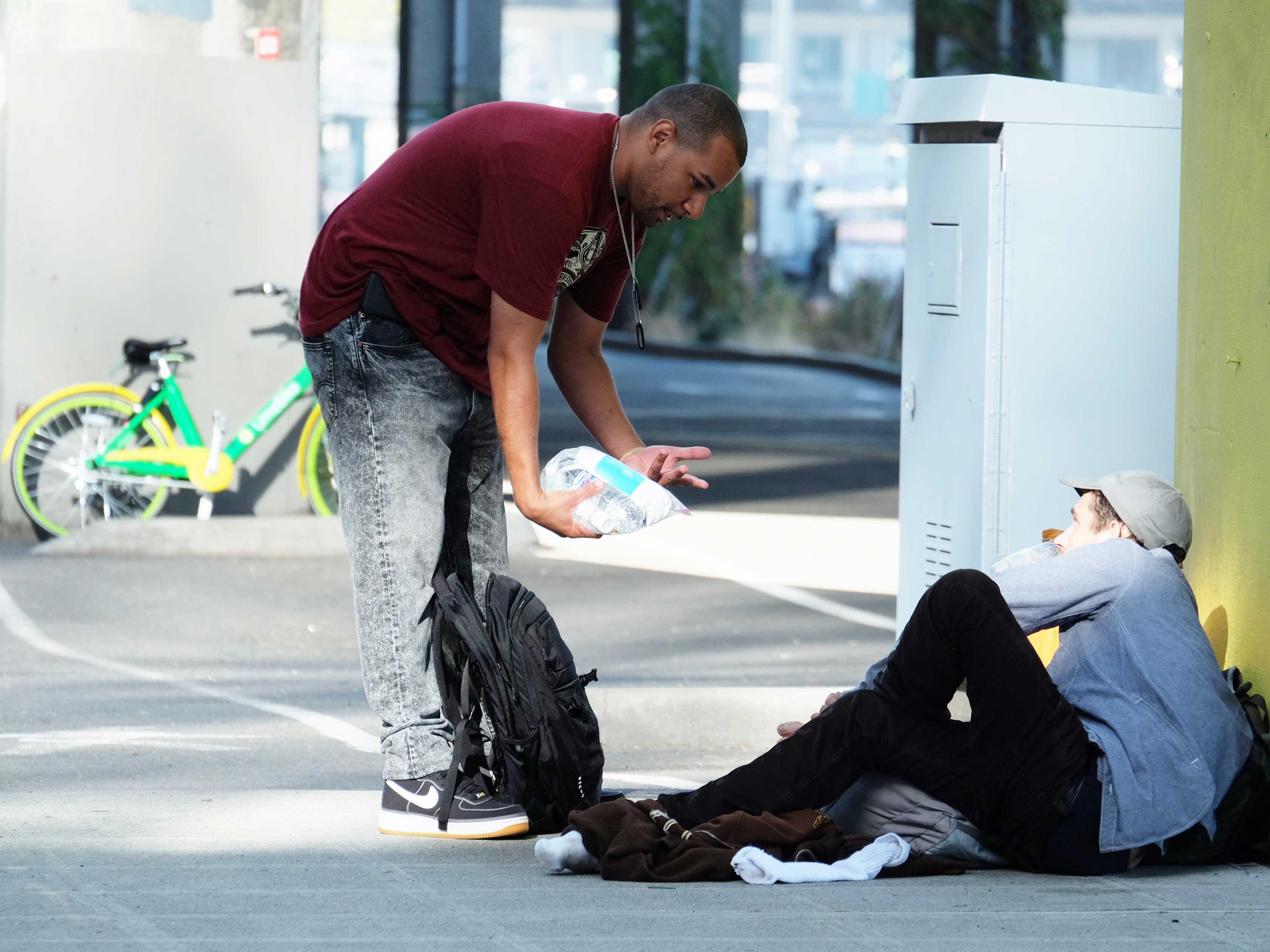News
Socks and Bottled Water Break the Ice
Posted on

Before leaving the office, Don Davis fills his backpack with 16 pounds of socks, deodorant, water, blankets, hand-warmers, gloves and contact cards. The supplies are simple, but fill essential needs for someone living outside. Davis splits everything into eight equal kits for distribution throughout the day.
“Offering water is a good icebreaker,” says Davis, one of five case managers on a 12-person Homeless Outreach Team managed by DSA. “You want to come from a place of giving, not taking away.”
Davis started working in mental health seven years ago with a focus on helping young people. Two months ago, he joined the Outreach Team, which was created in 2013 with funding from Metropolitan Improvement District (MID) ratepayers and the City of Seattle.
Today, Davis sets off from the Outreach office in Pioneer Square and heads toward the waterfront. One of the first people he meets is Jennifer, a slight woman with grey hair lying in the shade of a concrete planter. Davis stops to ask how she’s doing. Jennifer says she stays outside, and at this location in particular because the foot traffic makes her feel safer. Davis would like to get her into a shelter and he gives her his contact information and an outreach kit before moving on.
Making his way north along the waterfront, Davis loops through Waterfront Park below the Great Wheel before doubling back under the viaduct. Turning into a small parking lot he meets a young man and woman rolling up their bedding. They’re married, and the husband is a veteran employed as a day laborer while his wife is disabled and unable to work. They are saving for housing and Davis helps them work out a plan to get ID cards.
“Not having your ID or not having a Social Security card is a barrier to employment,” says Davis. “We can help them and explain the services that are available.”
Continuing south, he stops to give a kit to a young man lying on the sidewalk. They talk about options to connect him with shelter and resources.
“The first reaction is usually gratitude,” Davis says of the people he reaches each day. “They appreciate that they’re not overlooked.”
Davis believes outreach can create permanent fixes and be a bridge to long-term life improvement. “Relationship building is key,” he says “They see our faces every day and see that we’re adamant about helping.”
The last of his kits distributed, Davis heads back to headquarters in Pioneer Square. About 40 percent of the contacts he makes each day will eventually follow up at the Outreach office. Is that a good number?
Says Davis, “A good day is meeting anyone who is interested in getting off the streets. If one person shows up after we talk, that’s a success.”